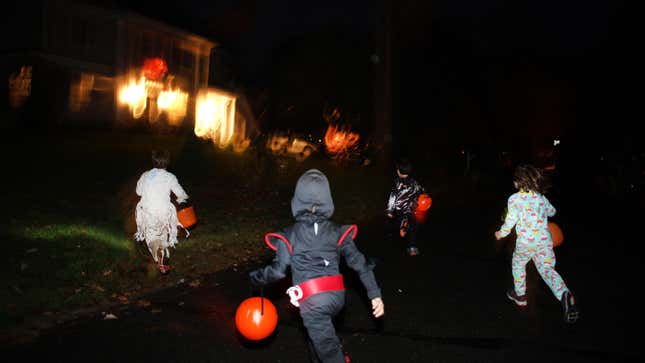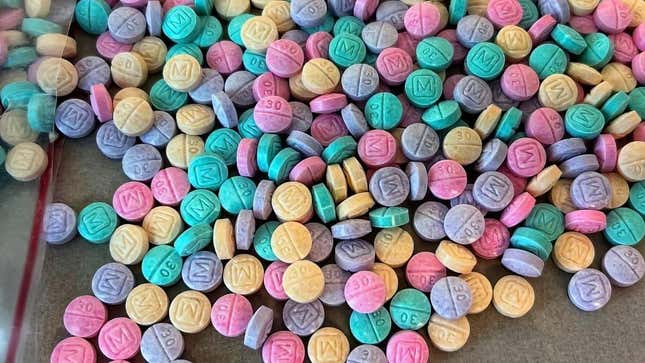The ‘Rainbow Fentanyl’ Halloween Candy Panic Is a Midterm Gift to Republicans
The myth of pastel opioids in kids’ candy buckets will get voters thinking about open borders and crime rates—or so conservatives hope.
In Depth

On Saturday, Lara Trump appeared on Fox News to claim that fentanyl will somehow end up in the baskets of trick-or-treaters, who might die from simply touching it.
“If one child dies from this on Halloween, I gotta tell you, we have to take action to stop this right now,” Trump said from behind a chyron that screeched “‘RAINBOW FENTANYL’ WARNINGS AHEAD OF HALLOWEEN.” “Parents are terrified, and we have no answers. What are we supposed to do?”
A male host interjected: “So Democrats ruin Halloween, too.”
Fearmongering stories about drugs in Halloween candy are nothing new, but this year has presented conservatives with a unique opportunity to mash together unfounded fears about contact overdoses from a highly potent synthetic opioid and opposition to Democrats’ immigration policies. In 2022, their panic-machine is being aided by the midterms news cycle, social media bots, and even the Drug Enforcement Agency.
The poison candy myth
The progenitor of the Halloween candy panic was a man named Ronald O’Bryan, who killed his own son with a poisoned Pixy Stick for life insurance money. But no evidence exists that a stranger has ever tainted kids’ Halloween candy, said Joel Best, a professor of sociology and criminal justice at the University of Delaware. Best, in his survey of press coverage since 1958, hasn’t found a single instance of a child being killed or seriously hurt from candy they got trick-or-treating.
Best dubbed this annual fear “Halloween sadism.” It’s only natural for parents to want to protect their children, but they can’t save their kids (or themselves) from rising sea levels, nuclear war, or possible asteroid strikes. Halloween vigilance presents the illusion of control, even though it makes no sense at all. “There’s somebody in your neighborhood who is so crazy that they poison little children at random, but they’re so tightly wrapped they only do it one night a year?” Best said. “What an incredibly manageable fear.”
This year, the news cycle gave fearmongers a new gift at precisely the right time.

On August 30, the DEA issued a press release announcing that it had seized brightly colored fentanyl pills in 18 states and claimed that the “trend appears to be a new method used by drug cartels to sell highly addictive and potentially deadly fentanyl made to look like candy to children and young people.” About a month later, Sen. Chuck Schumer (D-N.Y.) held a press conference where he repeated the unsubstantiated claim that drug dealers were targeting kids, holding up a roll of Sweetarts and saying the pills resembled the candy. Bot accounts leapt into action the same day, widely circulating the tenuous connection between Schumer’s warning and Halloween.
“There’s a kind of thing where, if it’s in the news in September, it becomes a candidate for a Halloween scare,” Best said. In recent years, for example, the freakout was that trick-or-treaters might come home with cannabis edibles, which are famously expensive; handing them out to random kids would cost a fortune. This panic was tied to dispensaries opening in states that had legalized marijuana and stories of kids finding edibles in their own homes—not getting them from strangers.
-

-

-

-

-

-

-

-

-

-

-

-

-

-

-

-

-

-

-

-

-

-

-

-

-

-

-

-

-

-

-

-

-

-

-

-

-

-

-

-








































